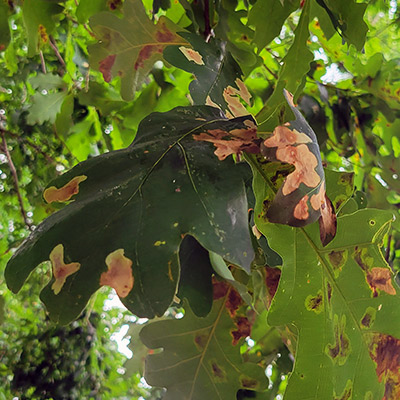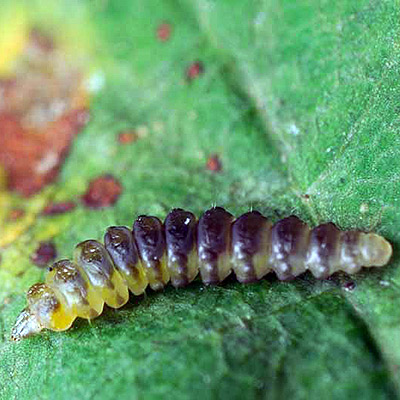Oak lovers, don’t panic! It is not leaf rot, but rather moth larvae feeding on leaf tissue impacting foliage in northeast Georgia.
By Kristin Love
As countless others in the southeast have taken notice, Elachee is no stranger to the increased phenomenon of what some are calling “leaf rot” on the myriad of oak trees that call Chicopee Woods home. Chicopee Woods boasts an impressive collection of Oak species ranging from Chestnuts, Northern Reds, Scarlets, Whites and Black Oaks, and many more. One thing they all currently have in common are detrimental markings on their leaves.


While many might assume that a disease is ravaging these beloved trees, it is actually due to individual leaf miners. The miner is the larvae of a moth, the Cameraria hamadryadella, which is common to White Oaks. This is not surprising, as the White Oak tree can be a home and habitat to over 140 different species including birds, insects, mammals, fungi, reptiles and more to provide shelter, food and space in the wilderness.
However, the Leaf Miner tends to take that hospitality to the next level. Once an egg is laid on a leaf and subsequently hatches, the miner bores into the leaf and feeds on tissue between the upper and lower surfaces of the leaf.
This disfiguration has arbor enthusiasts concerned about the health of long-standing trees that have provided shade and root structure in their backyards for decades. But don’t fret just yet! While this year we seem to be experiencing a heavy infestation in Hall County, Georgia, it’s not necessarily a cause for worry. Like everything tends to balance in nature, as the miner population grows, the number of beneficial insects that attack the miner increases as well.
While the necessary insect predation occurs, trees may drop heavily damaged leaves and replace them with new leaves in the Fall. Pesticide treatments are not recommended for managing leaf miners but raking up and destroying leaf litter is an effective control measure to reduce populations in subsequent years. If the problem persists for longer than two years on a particular tree, we recommend reaching out to a certified arborist to determine your options.
If you have further questions regarding the resurgence of Leaf Miner populations on your native Georgia Oaks, please reach out to the UGA Extension Office, Natural Resources division of Hall County at https://extension.uga.edu/county-offices/hall.html.
